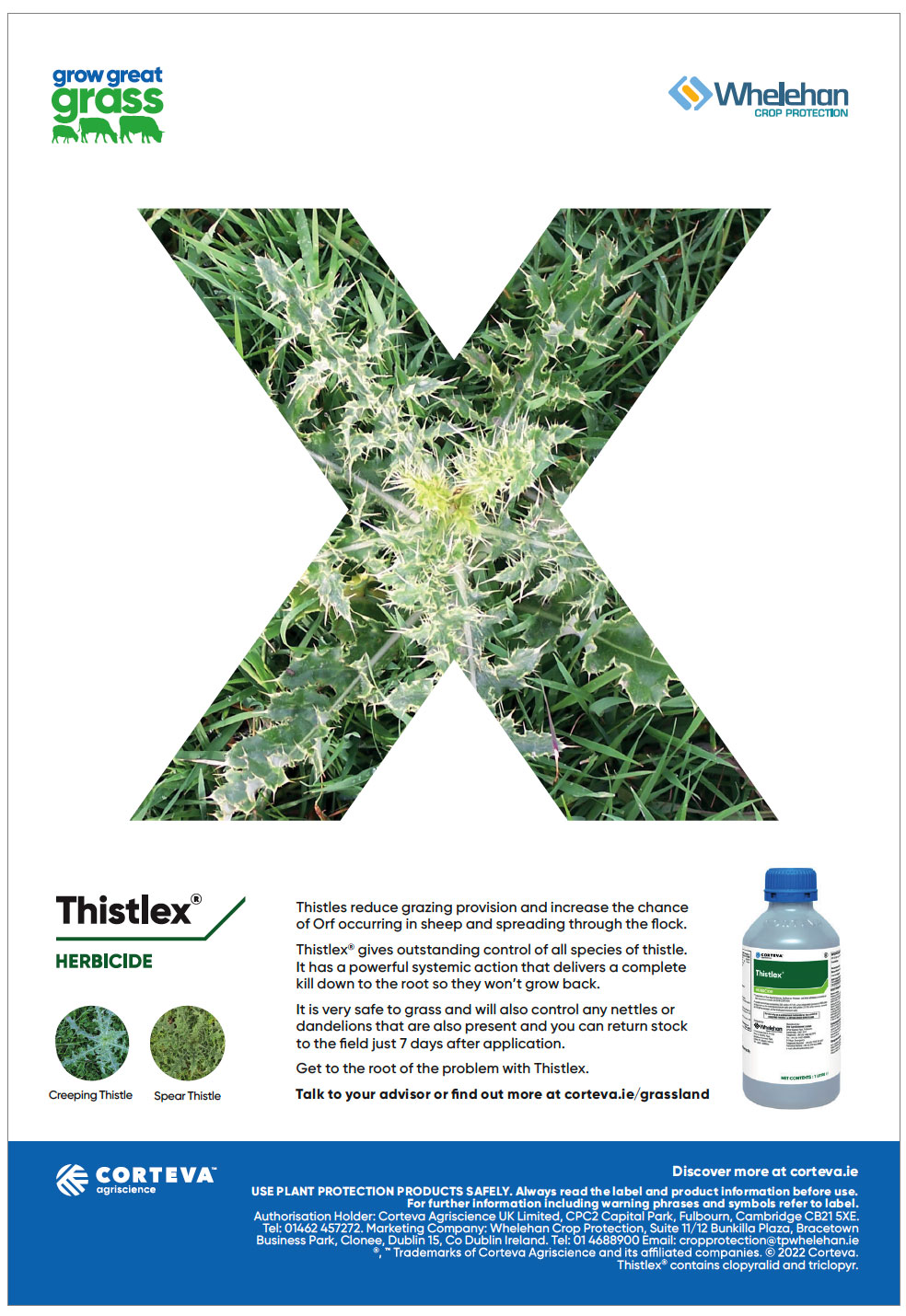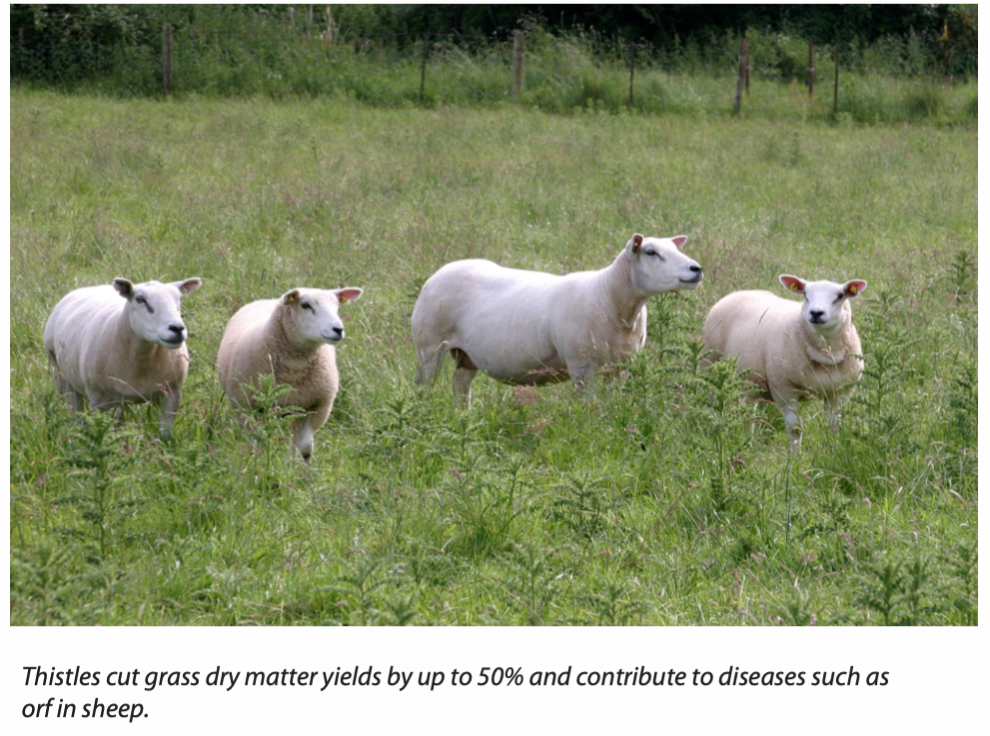 Many thistle-infested grazing pastures are now at the ideal stage for treatment with an effective herbicide. Thistlex, the systemic herbicide manufactured by Corteva Agriscience, is recognised as the product of choice for killing thistles.
Many thistle-infested grazing pastures are now at the ideal stage for treatment with an effective herbicide. Thistlex, the systemic herbicide manufactured by Corteva Agriscience, is recognised as the product of choice for killing thistles.
It is proven in independent trials and at farm level to give long-term control of both creeping thistle and spear thistle.
It contains the active ingredients triclopyr and clopyralid, which are absorbed right down to the roots of the thistles.
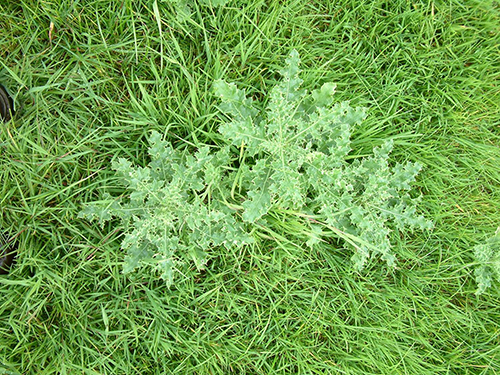 Timing
Timing
“The ideal time to spray is when thistles are actively growing, have four to 10 leaves and are 15-25cm high,” advised Chris Maughan, technical manager with Whelehan Crop Protection, the distributor of Thistlex on the Irish market.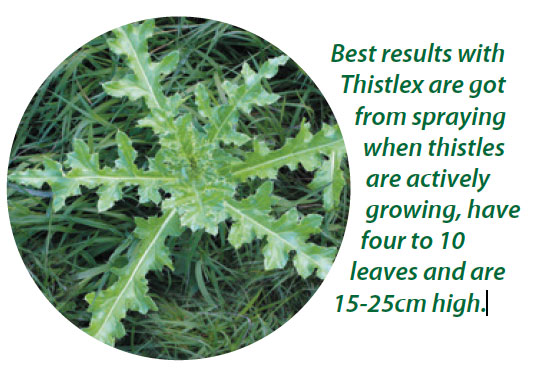
If they have gone beyond this stage and a seedhead has begun to emerge, his advice is to top them and wait for about three weeks’ regrowth when they should then be at the right stage for the most effective treatment with Thistlex.
Plunder
Thistles plunder grass yield and quality. Research has shown that animals leave 30cm (12 inches) ungrazed around each thistle plant. And one thistle per 20 sq metres is equivalent to a 1% loss in grass dry matter.
Therefore, 50 thistles/20 sq metres, which is common in thistle-infested pastures, is equivalent to a drop of 50% in grass dry matter yields.
Creeping thistle is a perennial plant that grows from seed or root sections. Seeds can survive in soil for up to 21 years.
Spear thistle is a biennial that grows from seed. Each flower head produces up to 400 seed heads, each of which can produce between 4,000 and 8,000 seeds. These seeds can remain viable for at least three years.
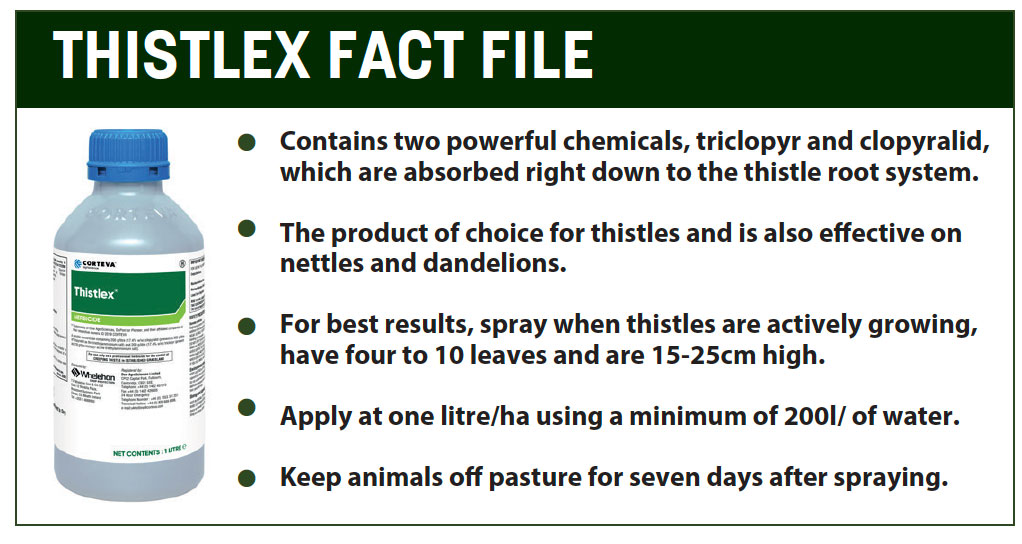 Animal Health Risk
Animal Health Risk
Thistles pose a risk to animal health. Skin damage to cattle and sheep grazing on thistle-infested pasture can contribute to orf, pink eye and mastitis.
Up to 30% of sheep flocks suffer from orf every year. The risk of spreading the disease is increased where sheep are grazed on thistle-infested pastures. The spikes damage the skin resulting in a rapid spread of infection throughout the flock.
